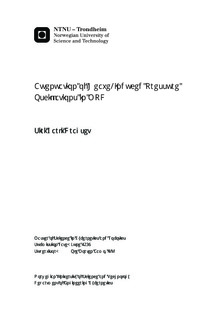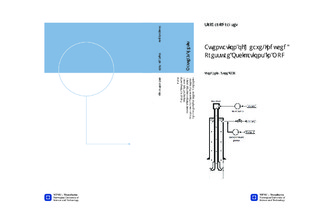| dc.description.abstract | The purpose of this thesis is to discuss and perform down-hole pressure management in the well while drilling from a floating rig throughout a pipe connection. Managed Pressure Drilling (MPD) technology has proven successful when drilling from stationary rigs, yet the technology is not used in floaters due to a heave motion caused by waves. It is desirable to retain a constant fluid pressure to prevent well collapses or fractures, which may pose a risk to the employees as well as the environment. In addition, damaged equipment may lead to excessive expenses and production restrictions. First, a gray-box model to describe the dynamics in the well is derived. As opposed to prior work on the subject, pressure measurements along the drill-string are assumed known and used in the model. The number of measurements in the model identification exceeds the mathematical order of the optimal model of the process. This raises questions concerning over-parameterization. Over-parametrization leads to unnecessary computational load, which should be avoided. Further, a Model Predictive Controller (MPC) is developed to control the fluid pressure. In order to verify the MPC performance, experiments in three different stages were conducted. Stage 1 was nominal experiments, stage 2 was tests against the Managed Pressure Drilling (MPD) Simulator, and the final stage was tests in the IPT Heave Lab. In the nominal tests, the disturbance was suppressed as much as 80\%. Simulator experiments showed positive results as well, and suppressed disturbances from waves with a period of 3 seconds, which is the assumed worst-case scenario, by 63\%. The experiments in the IPT Heave Lab were not conducted as planned, thus it was inexpedient to compare the performance to earlier work on the matter. The disturbance is not observable in practical applications. Thus, it is necessary to predict future disturbances in order for the MPC to account for this. A predictor was implemented based on known down-hole dynamics and it demonstrated good performance in the simulator. Poor performance of the observer in the lab indicated that the parameters in the dynamic equations were not tuned to describe the lab dynamics. | nb_NO |

